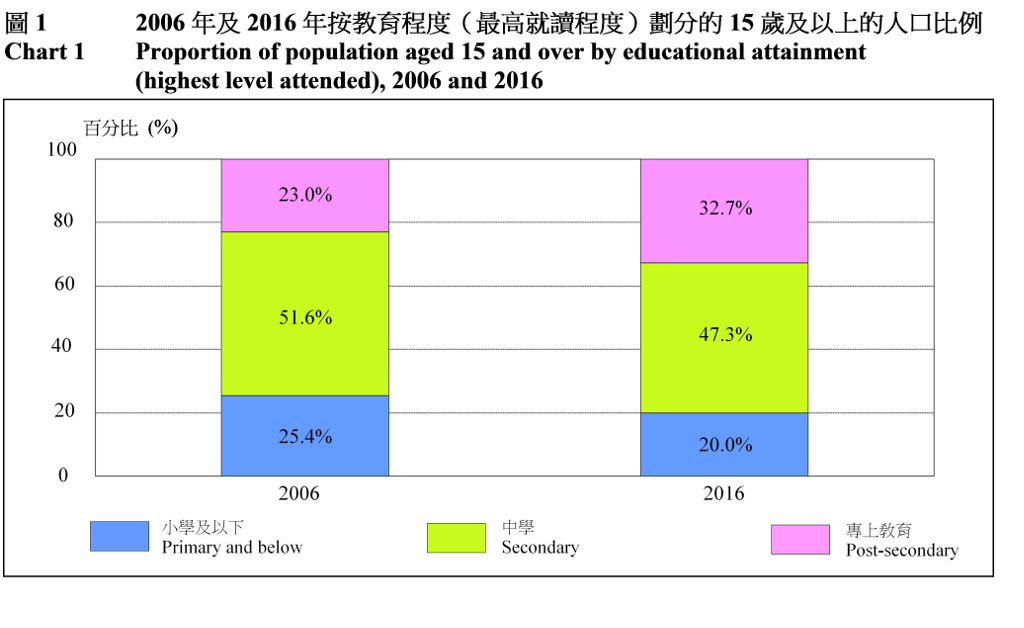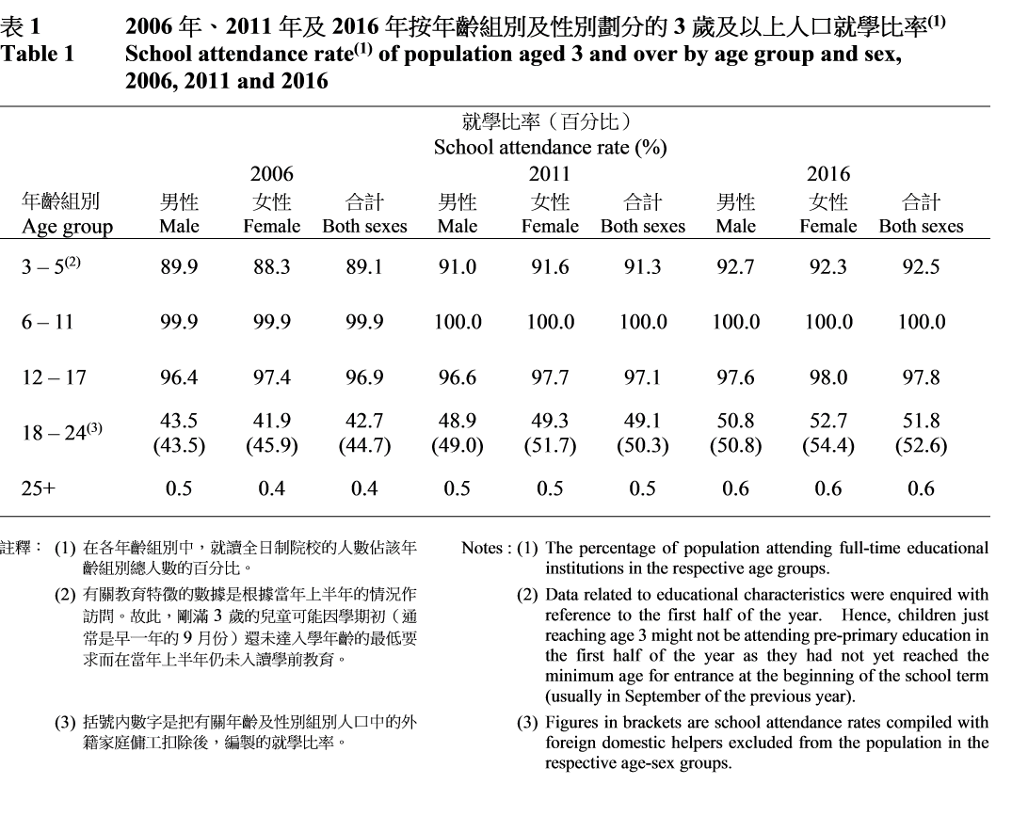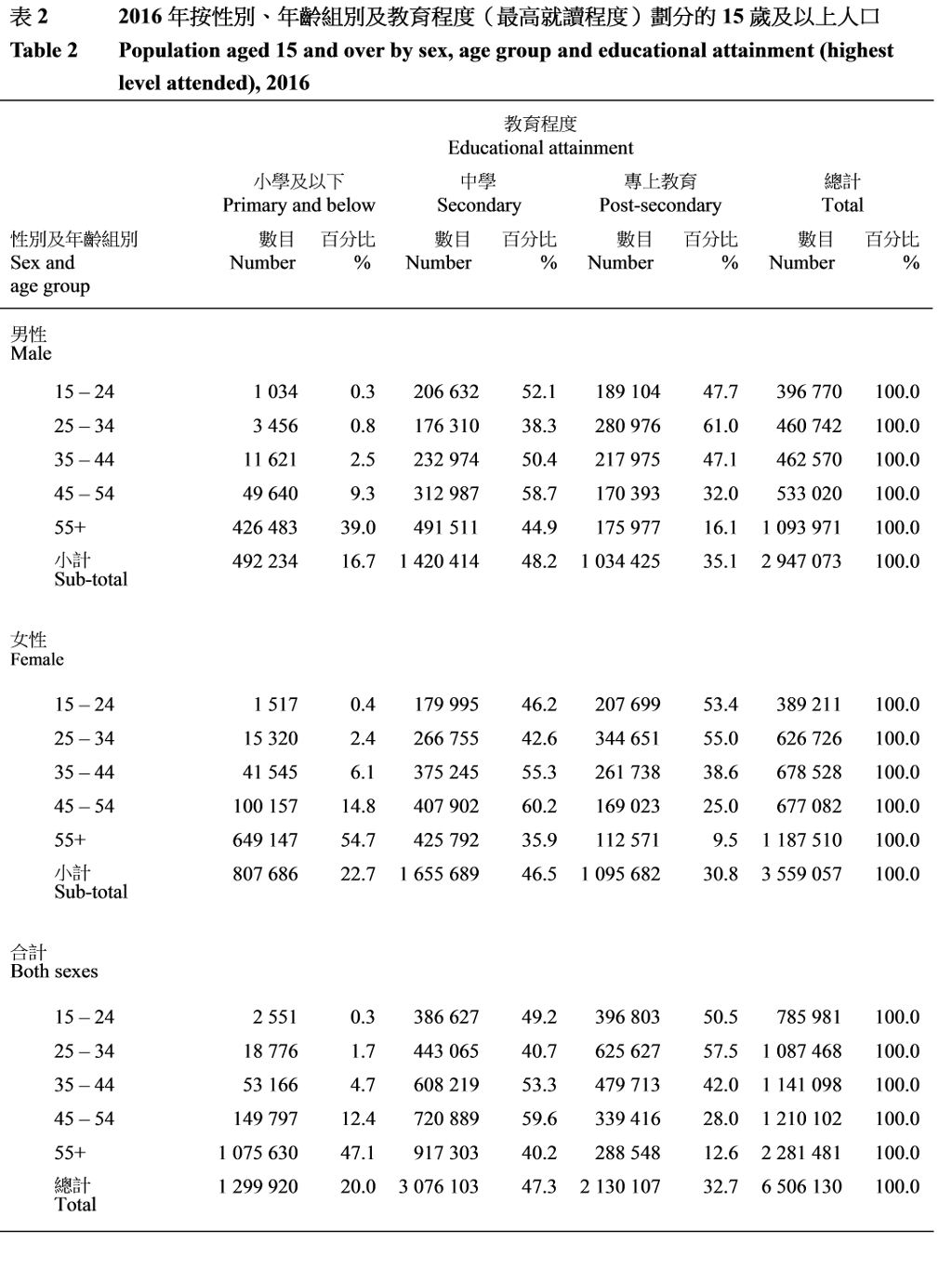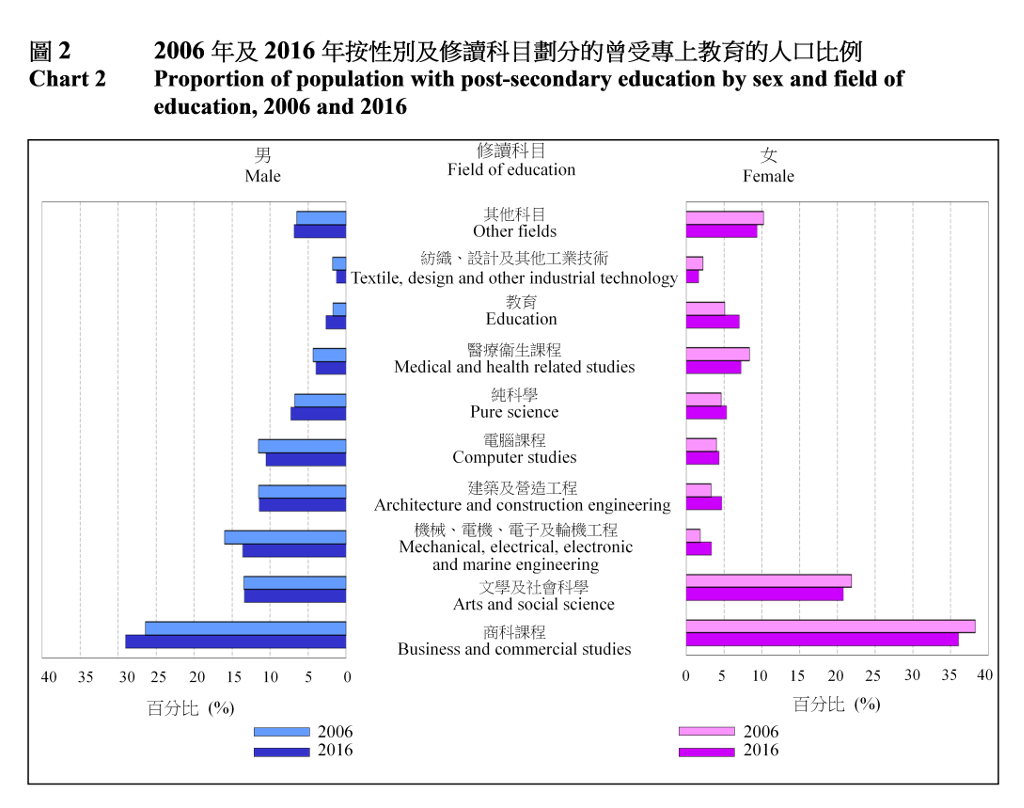Home > By-census Results > Snapshot of Hong Kong Population > Educational Characteristics of Hong Kong Population
Educational Characteristics of Hong Kong Population
Educational attainment of Hong Kong population continued to improve
1. Over the past 10 years, the proportion of population aged 15 and over having attended secondary and higher education increased from 74.6% in 2006 to 80.0% in 2016. The proportion having attended post-secondary education showed a marked growth from 23.0% in 2006 to 32.7% in 2016.
(Chart 1)

School attendance rate of youths increased significantly
2. The school attendance rate of children aged 3-5 was 92.5% in 2016, whilst school attendance of children aged 6-17 was almost universal. On the other hand, over the past 10 years, the school attendance rate of youths aged 18-24 increased significantly from 42.7% to 51.8%. This suggests that more young people continued their higher education as a result of the greater educational opportunities available in post-secondary institutions.
(Table 1)

More young females than males were attending post-secondary education in 2016
3. For Hong Kong as a whole, women appeared to have lower level of educational attainment than men. This was because the figures included older generation women who generally had a smaller chance of receiving education when they were young. The proportion of males having attended secondary and higher education in 2016 was 83.3% for the population aged 15 and over, as against 77.3% for females.
4. Notwithstanding the overall sex differential in educational attainment, younger females were as well-educated as their male counterparts in 2016. Of females aged 15-24 and 25-34, 99.6% and 97.6% respectively had attended secondary and higher education; the corresponding proportions for males were 99.7% and 99.2%. When looking at the proportion of attending post-secondary education, the figure for females aged 15-24 (53.4%) was indeed higher than that for males in the same age group (47.7%).
(Table 2)

“Business and commercial studies” remained as the most popular field among population attended post-secondary education
5. The proportion of the population with post-secondary education in the field of “Business and commercial studies” increased slightly from 32.3% in 2006 to 32.7% in 2016. “Arts and social science” and “Mechanical, electrical, electronic and marine engineering” were the next two more popular fields of education.
(Chart 2)

Close to 40% of pre-primary and primary students walked to school
6. The mode of transport used by students varied among students with different levels of education. In 2016, 38.1% of the pre-primary students and 38.7% of the primary students mainly walked to school probably because of the close proximity of the schools to their homes. For secondary students, the proportions of them mainly walking to school and travelling by Mass Transit Railway (Local line) to school were 25.5% and 24.2% respectively.
(Table 3)

Other references
1. 2016 Population By-census - Main Results
2. 2016 Population By-census - Summary Results





